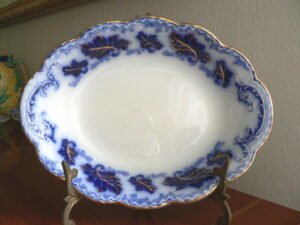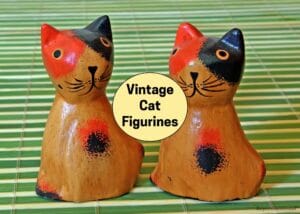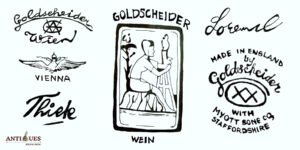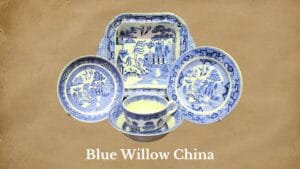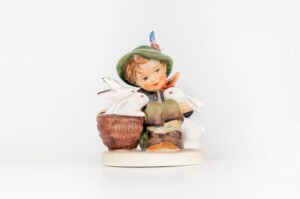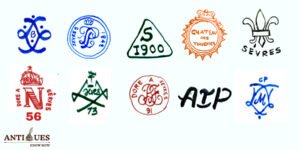Royal Doulton figurines are actually royal collectibles that could be worth a big figure. These antique pieces never fail to attract genuine fine china collectors. But I’ve often seen collectors struggle to assign the right value to these iconic figures, mistaking a precious piece for a casual figure.
In such a case, this detailed Royal Doulton figurines price guide may come in handy! In this guide, you will find easy identification keys, dating codes, and valuation factors that affect the real price of these figurines in antique markets!
The Journey of Royal Doulton Figurines
- 1815: John Doulton founded a small pottery factory, Doulton Lambeth Pottery, in 1815 along with John Watts. The company manufactured general salt-glazed household stoneware like inkwells, beer bottles, etc.
- 1835: Doulton’s son, Henry Doulton, joined the Doulton & Watts company and led it towards industrial ceramics production. He also innovated the steam-driven potters’ wheel which pivoted the company to becoming a success.
- 1867: Henry hired a sculptor, George Tinworth, and started a new art pottery line at a new studio in Lambeth. Tinworth first made artistic vases and monumental sculptures. He then established another factory in Burslem to manufacture tableware as well as terracotta figurines.
- 1913: Doulton and Company released its first porcelain figurine series, popularly known as the “HN Series,” produced by the designer Charles Noke and painted by artist Harry Nixon. Since 1913, Royal Doulton has manufactured thousands of figurines of various characters.
- 1971: After its huge success, Queen Elizabeth II granted Doulton and Company the “Royal Warrant,” which is how it got its iconic name, The Royal Doulton!
5 Factors That Affect the Value of Royal Doulton Figurines
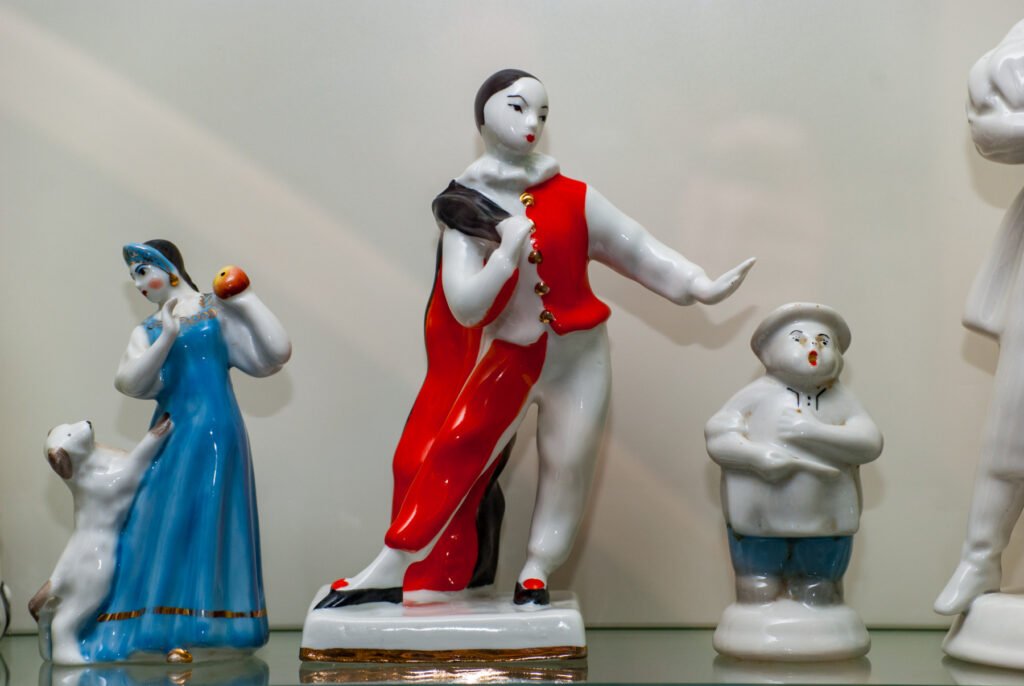
Generally, old Royal Doulton figurines are quite precious and can easily sell for up to $1,000. But some pieces are much more valuable than that.
Understanding the key valuation factors of a Royal Doulton figurine is crucial to ensure that you don’t over or undervalue your piece.
1. Condition & Packaging
Older figurines are more attractive for collectors, but only if they are in perfect condition. If your Royal Doulton figurine has chipped edges, faded colors, repainted sections, or broken parts, you shouldn’t expect a high price.
Besides, if the figurine comes with its original box and certificate cards, it becomes even more precious. So, always look for boxes and paperwork.
2. Rarity & Exclusiveness
A rare Royal Doulton figurine is one that either belongs to an exclusive series and a limited edition or is a design sample or a prototype figurine. You can spot them by markings like “Survey Figure,” “Factory Proof,” “Design Sample,” and “Not Produced For Sale.” at the bottom with the logo.
Such exclusive or prototype figurines can sell for thousands of dollars at an auction. For example, a rare Royal Doulton Bunnykins prototype figurine marked “Design Sample” at the base was sold for a whopping $44,300 on LiveAuctioneers!
3. Age
Naturally, older Royal Doulton figurines from the early 20th century, especially from the 1920s to the 1940s are worth more than the newer ones. However, rare or special edition pieces from later times are also collectibles.
4. Manufacturer’s Markings
Royal Doulton figurines signed by their artists or modelers usually fetch more value from the collectors than the ones without them. So, look vigilantly for hand-painted artists’ initials or signs at the base of your figure.
5. Significant Figurine Characters
If a Royal Doulton figurine represents a significant historical character or has any relevance to any historical figure, it will have more monetary value than regular figures. Some examples are the Queen Victoria figurine, Scarlett O’Hara figurine, and Cleopatra figurine.
A Queen Catherine Parr (HN3450) Royal Doulton Figurine from the “Six Wives of Henry VIII” series is currently listed at $900 on Seaway China Auctions!
5 Most Valuable Royal Doulton Figurines to Find!
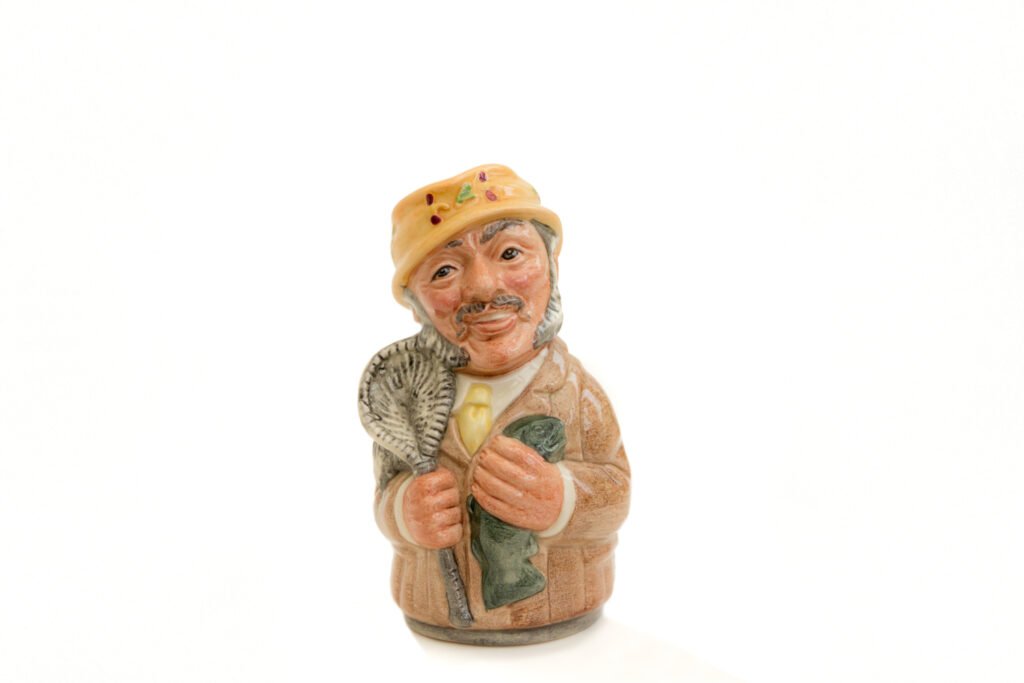
Royal Doulton figures are highly collectible for which collectors can pay thousands! Here are the most expensive figures ever sold!
1. Royal Doulton St. George “Exhibition Only” Figure (Sold for $21,000)
This exclusive Royal Doulton figurine was released for “Exhibition Only,” as marked at the bottom. The stunning figurine displays St. George on a white horse with knight armor and a sword in his hands. Being an exclusive release, this exhibition figurine was sold for $21,000 in 2023 via Invaluable!
2. Royal Doulton “The Matador” Prestige Figurine (Sold for $3,400)
This marked special edition Royal Doulton figurine was sold for $3,400 on eBay! This rare figure, part of the Prestige Collection, displays a daring matador dressed in a golden and black outfit waving his red and yellow cape in front of a heavy bull charging towards him!
3. The Butterfly Girl Figurine (Sold for 1,750)
Royal Doulton’s human character figurines are quite popular, featuring men and women in real-life scenes. One such antique Butterfly Girl (HN1456) figure dating back to 1932 won a bid of around $1,750 on eBay! The figurine shows a pretty lady spreading her pastel shade outfit like butterfly wings.
4. Special Edition Royal Doulton Bunnykin Figurine (Sold for $1,200)
Bunnykins is Royal Doulton’s most popular series. While it was originally the nursery ware series, the company also made Bunnykins figurines featuring adorable bunnies in different settings and themes. A limited-edition 1993 Bunnykins Sergeant Mountie figurine, one of the only 250 made, was sold for $1,200!
The original Bunnykins figurines were made in 1939. Then, in the 1960s, the series is reintroduced by the company. Common Bunnykins figurines generally sell for $20 – $50.
5. Royal Doulton Milady Pink Figurine (Sold for $800 – $1,800)
This gorgeous 1940s figurine displaying a beautiful lady in a light pink dress with black gloves and a black and pink hat sells for around $800 – $1,800 in an auction. The value is higher if the figurine is in a mint condition.
Identifying & Dating Royal Doulton Figurines
To spot a real Royal Doulton figurine in a huge figurine lot, you will need to identify the following key features.
1. Trademarks/Backstamps
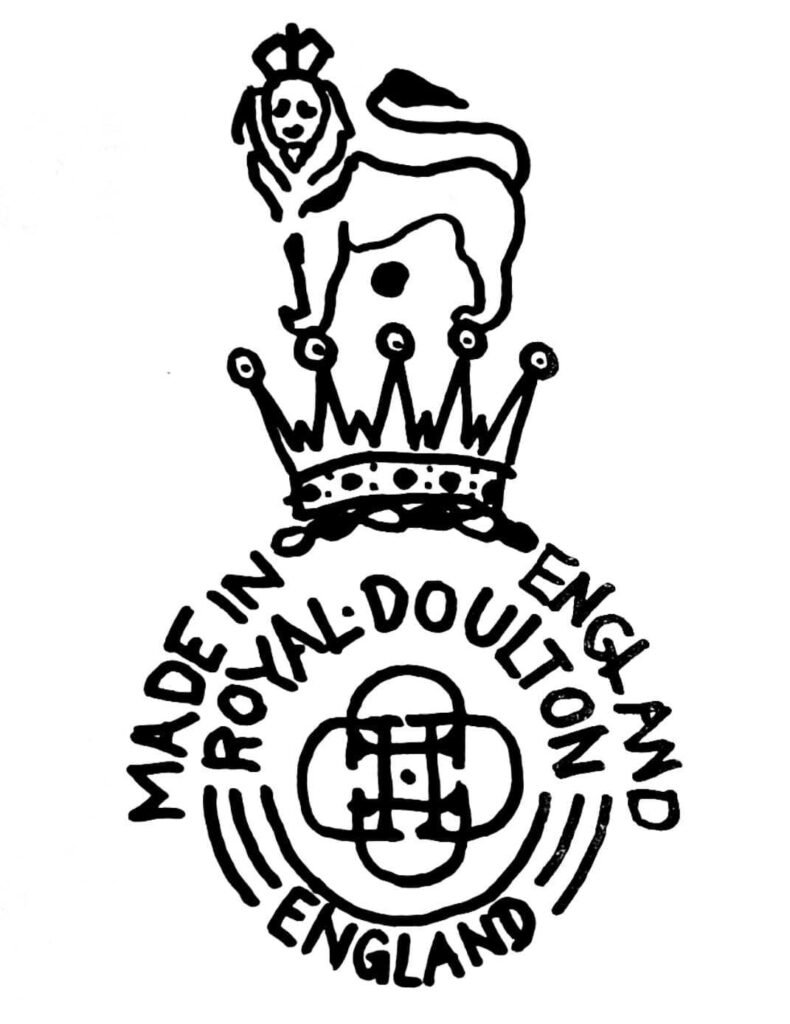
The first tool for checking the authenticity of a Royal Doulton figurine is the trademark/backstamp, which you will find on the bottom of the figurines.
When Royal Doulton released its first fine china figurine in 1913, the company was using the Royal Doulton tiger trademark, which has interlocking D’s at the center, with circular “Royal Doulton/England/Made In England/Bone China” text.
Until 1922, the company also brought some variations in the logo. For example, in some figurines, you may not find the words “Bone China” at the bottom of this crowned tiger with D’s backstamp.
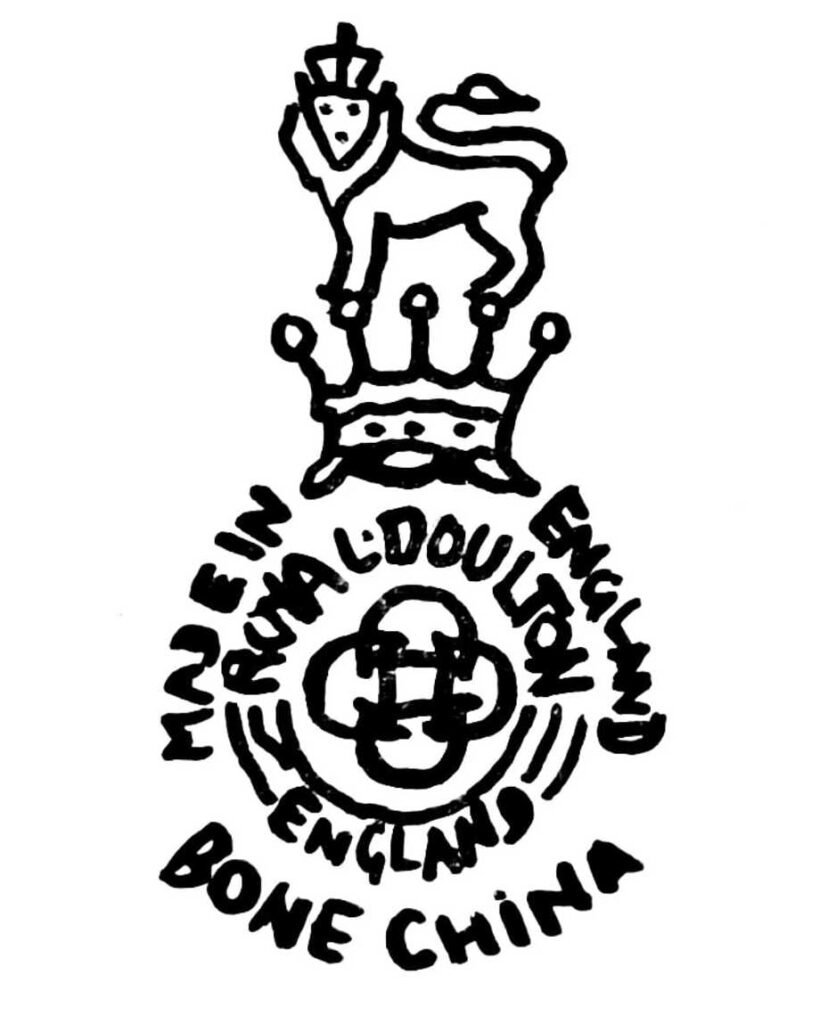
Apart from this company logo, you may also find the figurine model name at the base of the post-1916 figurines. Models made before this year mainly had just the trademark.
2. HN Number & Date Codes
The HN number, named after artist/painting head Harry Nixon, is one of the most effective identification tools for these Royal figures.
Starting from 1913, all Royal Doulton figurines were assigned in chronological HN numbers. The first figurine of the “HN series” was the “Darling” figure with “HN 1” as a tribute to the Queen. The lower the HN number, the older the piece.
After 1940, the figurines were also given unique HN numbers based on the number blocks assigned to specific modelers.
During 1928 to 1954, the figurines were given another number stamped on the right of the trademark, which is the dating code. Simply adding 27 to this number (which may be hard to see in some cases) will help you track a Royal Doulton figure’s manufacturing year and age. !
For example, if you see the number “12” next to the logo, it suggests that the figurine was made in 1939.
3. Artists Marks & Other Markings
Another significant hint to spot a real valuable Royal Doulton figurine is the maker’s sign on the base. While several artists worked at Royal Doulton company, figurines modeled by some of the earliest makers are the most sought-after.
You can find these special figures by the artists’ signs on the bottom. In some figurines, you may find the maker’s initials, while others display full signatures.
A few popular artists’ signs to look for are:
- Charles Noke
- Peggy Davies
- Leslie Harradine
- Harry Nixon
- George Tinworth
Identifying Royal Doulton “Seconds” and Fake Figurines
A Royal Doulton “seconds” are figurines that display some kind of imperfection made during the manufacturing process. While these pieces can be identified by the flaws, the company itself marked the seconds in its unique ways to distinguish them from the high-quality figures.
Here are some indicators you must look for to spot a second:
- These figurines may have dots, bubbles, chips, a painted or glazed dent, or a pimple (protrusion) on the surface.
- You may see a hole drilled right at the center of the backstamp on the bottom.
- In some cases, the “Royal Doulton” text in the backstamp may be a scored line or a line painted right across the logo.
- The crown (or the whole logo) in the back stamp may have deliberate chips, scratches, or a straight vertical scratch across the stamp.
As for the fake Royal Doulton figurines, you can spot them with the following clues:
- Irregular Backstamps: The Royal Doulton logo backstamp in the fakes might be irregular compared to an authentic piece. In some cases, the original base might be painted and given a second, forged stamp or HN number.
- Small Size: Fake figurines are always smaller than authentic pieces as they are made in a mold using an authentic piece. So always refer to the company’s guide to check the original measurements of a Royal Doulton figure.
- Unusual Colors: You may spot counterfeit figures by their unusually brighter colors than an authentic Royal Doulton figurine. The painting details, such as missing features or outfit details, may also hint that it’s likely a fake.
- Cheap Make: They are made of low-quality material instead of porcelain. You may also see unpainted bases in some of the fakes.
As you can see, Royal Doulton figurines could be hidden gems. So, whether collecting or selling, it’s always wise to refer to a price guide before making a deal. If you are willing to collect more valuable figurines, this list of rare antique figurines might interest you!
Note: This article is intended for informational, educational, and entertainment purposes only. Some images are illustrative and may not represent actual brands, products, or related entities. All trademarks, product names, brand logos, packaging, and other intellectual property referenced remain the exclusive property of their respective owners. Any brand mentions or references are provided solely for descriptive and educational context and do not imply any formal or commercial association.




